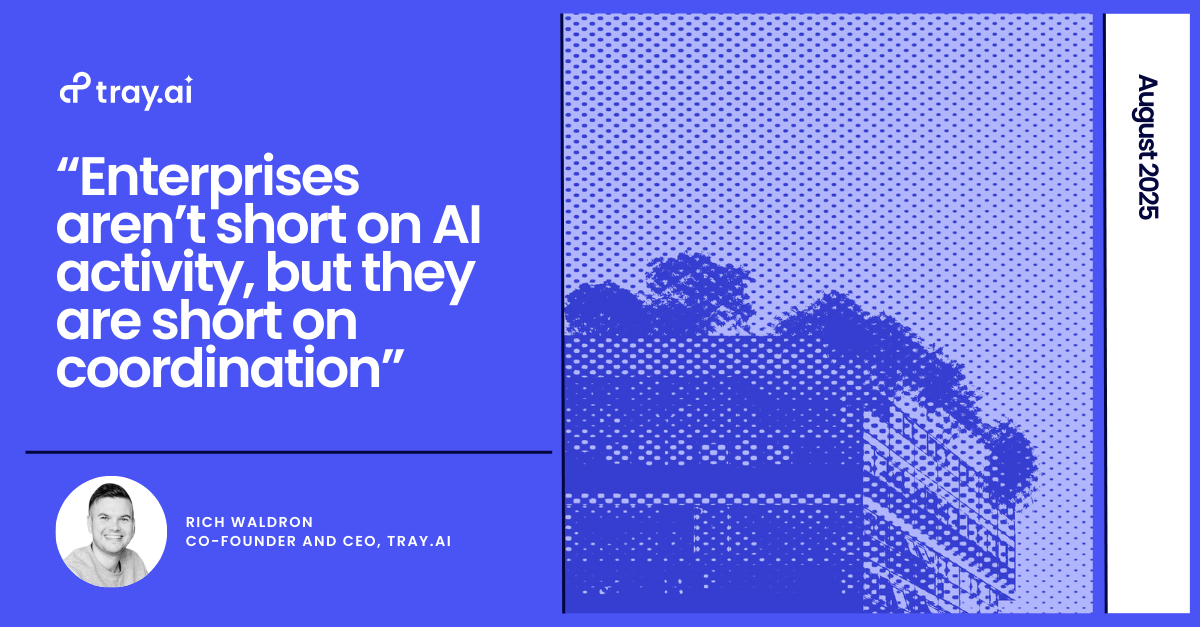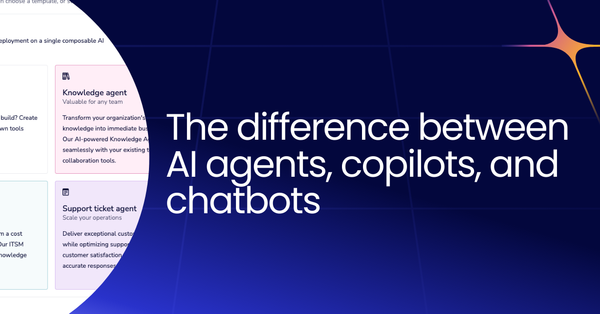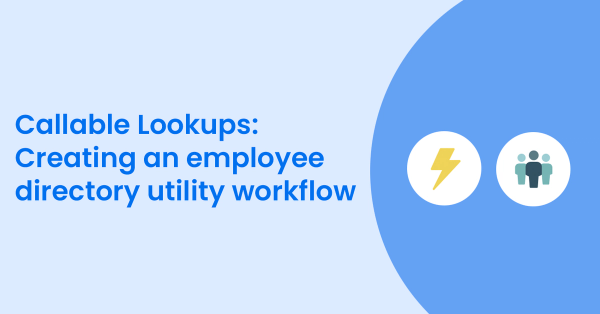This article was originally published by Rich Waldron, Tray.ai co-founder and CEO, on LinkedIn.
I recently sat down with tech expert Hyoun Park to talk about a question more enterprises are now asking, and one I’ve been trying to answer for months: What happens after the first AI agent?
Many, if not most, organizations are in the process of building agents. Some even have them running in production. But the moment you go from agent one to agent two, three, four, ten, everything changes. Challenges go beyond the technical and into the operational.
We had a great conversation that touched on a lot of different things, but there were a few themes that we kept coming back to:
1. Agent sprawl is real, and it’s already happening
Enterprises aren’t short on AI activity, but they are short on coordination. We’re seeing multiple departments launching agents in parallel, often without shared standards, oversight, or reuse. What you get is duplication, shadow infrastructure, and conflicting behavior between agents.
We’ve seen this story before: Early SaaS. Early cloud. Early RPA. Each started with “just one” and quickly turned into sprawling, ungoverned portfolios.
Without orchestration, agents will follow the same path.
2. Ownership isn’t always obvious but it should always be intentional
Who should own AI agents inside the enterprise? That’s not a settled question. Early on, centralized teams (IT, digital innovation, CoEs) tend to lead the charge. But over time, that model hits a wall.
The best path forward is collaborative, with shared governance between technical and domain teams. If AI agents are built in a vacuum, they won’t solve real business problems. And they won’t get used.
Ownership models need to reflect the way your business operates. Otherwise, agents stay as prototypes.
3. Agents need continuous care and structure
One of the most important differences between agents and traditional software is that agents are dynamic. They learn. They drift. They break. You can’t set it and forget it.
This means ownership doesn’t end at deployment. You need infrastructure around training, re-training, toolset updates, and usage monitoring. You need to understand how agents interact with each other. And you need to design for resilience, not just function.
We’ve seen this before with new tech. Lots of promise, but complexity became a liability without the right strategy. We can avoid repeating that pattern. But it requires a mindset shift.
Final thought
The more enterprises I speak with, the clearer it becomes: It’s not hard to build your first agent. The hard part is making the second one and the tenth one work as part of something larger.
Thanks again to Hyoun for the conversation. If you missed it live, the full session is available to watch.




